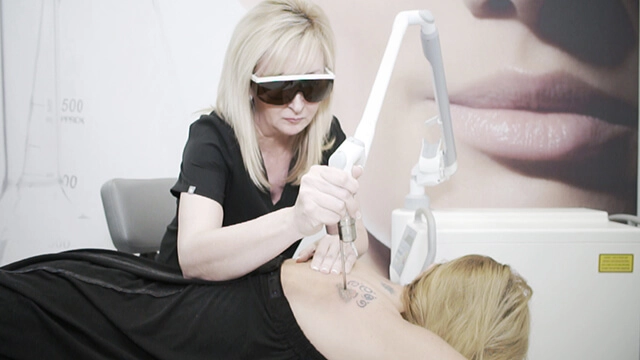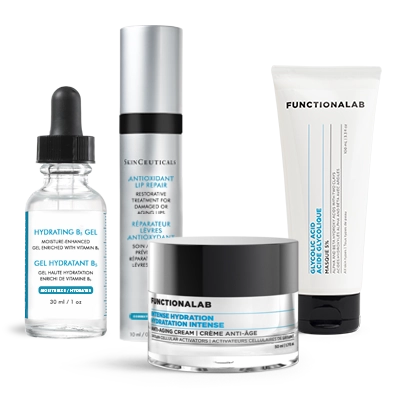Available in your clinic
Not available in your clinic
Face treatments
Body treatments
Treatment
Available in your clinic
Not available in your clinic

The platforms used by Dermapure for tattoo removal are meticulously selected to offer the best results on the market. Fotona’s QX Max, a Q-Switched medical laser with 4 different wavelengths, can remove all tattoo colors.
This treatment aims to remove amateur, professional, cosmetic (permanent make-up) and medical (radiotherapy points) tattoos. The light beam passes through the skin without damaging it, and splits the tattoo pigments into small fragments that are then eliminated by the body. Each session reaches an even deeper layer of pigments. The QX Max is currently the most powerful Q-Switched laser on the market, reaching the deepest layers of the dermis, while being very safe.
Taking a picture of the treated area before and after the treatment allows you to measure the progress of the treatment.
Desensitizing the skin with an anesthetic lidocaine-based gel or by using a cold air machine helps to reduce discomfort during treatment.
Carefully removing all traces of gel, make-up and lipid film is an essential step before a tattoo removal session. It is important to disinfect the skin with alcohol as well in order to create a suitable and sterile canvas before the procedure begins.
Wearing protective glasses may be required to protect the eyes during the tattoo removal procedure. However, it is normal to see a few flashes of light throughout the session. Once well protected, your eyes have nothing to worry about and are safe.
Applying the applicator to the skin of the target area and discharging the energy onto the surface to be treated signals the beginning of the treatment. Feeling the laser light on your skin can be unpleasant and it is common to feel pain during the session.
The number of sessions required for laser tattoo removal varies according to the amount of pigment, its depth and the colors present. Thus, the treatment may generally require between 3 and 8 sessions, sometimes more. Each session is spaced 6-8 weeks apart. It is important to protect the treated area from sun exposure between each session and after the last treatment for a period of two months.
Pregnant or breastfeeding women should avoid this type of treatment, as well as anyone who has received Accutane treatment in the past 6 months.
Patients who have been exposed to the sun without sun protection within 4 weeks before the treatment date will not be able to receive it.

Shop our products for an enhanced beauty routine!
Our tattoo removal laser can remove many types of tattoos, including those done by professionals and non-professionals. This procedure can also remove cosmetic (permanent make-up) and medical (radiotherapy points) tattoos. Tattoos on fragile areas of the body, like the eyelids, may not be suitable for this laser removal procedure.
Q-Switched laser technology is a widely used and effective method for removing tattoos. It operates by emitting short bursts of high-energy laser light in extremely brief durations, measured in nanoseconds (billionths of a second). This unique technology works to break down and disperse the tattoo ink particles within the skin. Q-Switched laser technology is generally safe for a wide range of skin types.
The duration of a typical laser tattoo removal session can vary depending on several factors, including the size, color, and age of the tattoo, as well as individual skin characteristics. Patients generally require three to eight sessions, spaced six to eight weeks apart, to allow the skin to heal and the body to eliminate the fragmented ink particles effectively.
You will receive guidelines to help you prepare for your laser tattoo removal treatment. Prior to your treatment sessions, it’s advisable to avoid sun exposure. Before the removal begins, we will provide protective eye goggles and use a lidocaine-based gel or cold air machine to help reduce discomfort during treatment.
After the treatment, and in between subsequent sessions, it’s recommended to avoid sun exposure and scratching on the treated area. For extra protection, wear at least an SPF 30 and keep the area clean and moisturized.
Immediately after treatment, you may experience some redness, swelling, and mild discomfort in the treated area. However, most patients can return to their routine immediately after their session. Slight fading of the tattoo may be recognizable after the first session. However, the most noticeable results generally occur several months after completing the entire treatment series.